Royal
Please
Note: Firefox and some iPad’s or iPhone’s, etc are not suitable
Use Google Chrome
for this web page to load perfectly!
Click the logo above to reach the ssMaritime FrontPage for Ships of the Month & News Updates
With
Maritime Historian, Cruise‘n’Ship Reviewer, Author & Lecturer
Please Note: All ssmaritime as well as my other related maritime & cruise sites are 100% non-commercial and privately owned sites. Be assured that I am NOT associated with any shipping or cruise companies or agencies or any other organisations! The author has been in the passenger shipping industry since May 1960, but although retired and unwell, I occasionally attempt to write an article now and then, in order to bring enjoyment and pleasure to ship enthusiasts past passengers and crew.
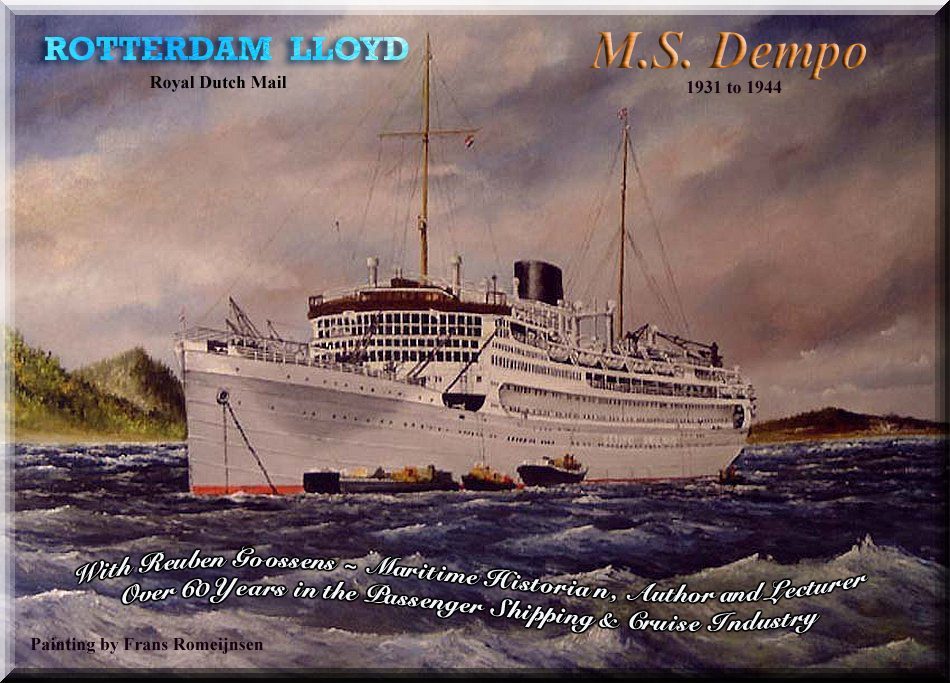
Photographs are from the author’s private collection that goes back to 1960 as well as from …
…
and with thanks to “
Introduction & Construction:
M.S. Dempo was the second of a pair of ships to be built for the Royal Rotterdam Lloyd (RRL), the first to be completed was the 16,981 GRT (Gross Registered Ton) M.S. Baloeran, which was completed on March 22, 1930, and she departed on her maiden voyage on April 15 from Rotterdam and headed via the Suez Canal to Batavia in the Dutch East Indies (today known as Indonesia). Her new sister would externally be almost identical.
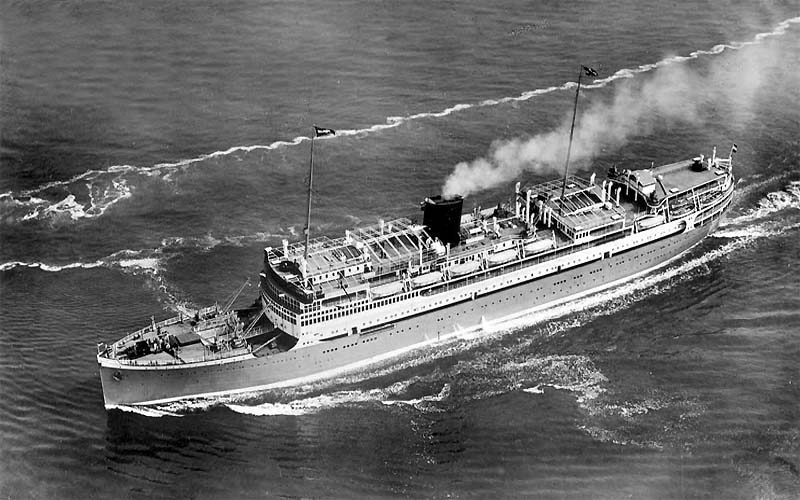
A
fine aerial view of the
The 16,979 GRT Dempo was laid down on July 15,
1929, at the “
On July 26, 1930 her official naming and
launching of the “Dempo” was performed, by
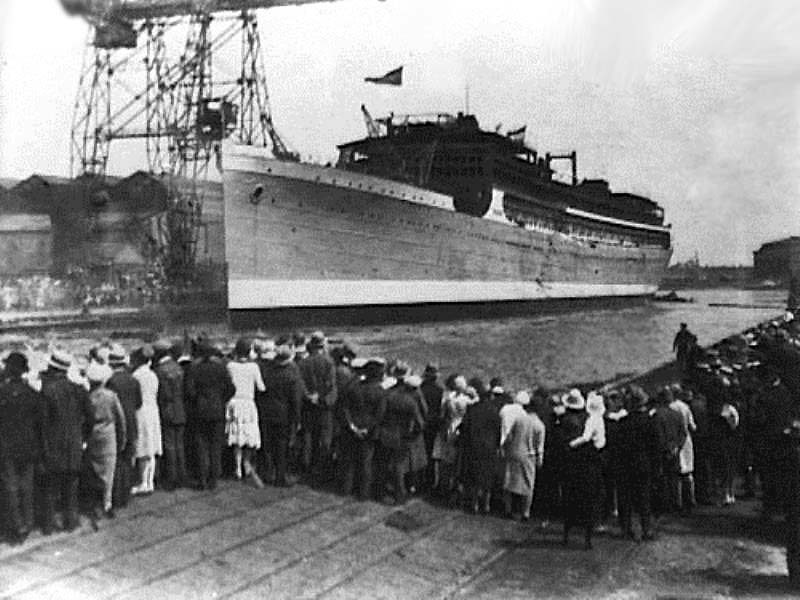
The
naming and launching of the Dempo is about to take place on July 26, 1930
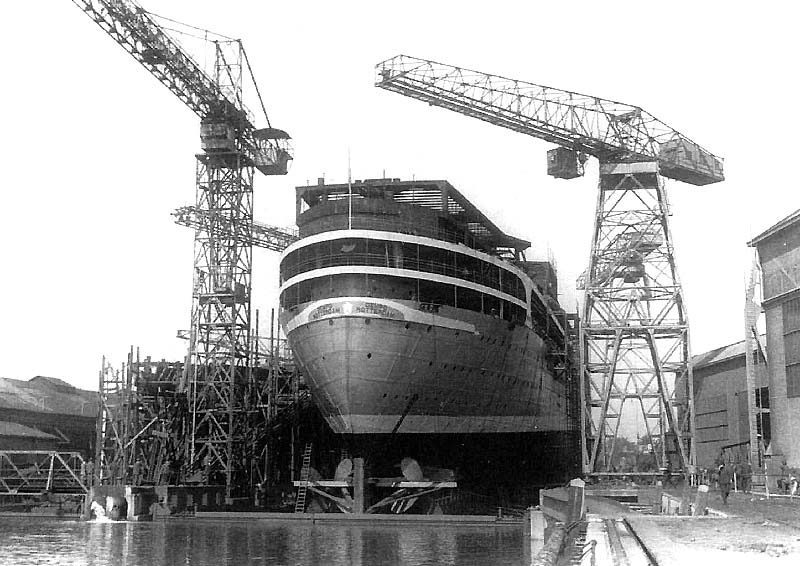
The
Dempo is made ready to be launched
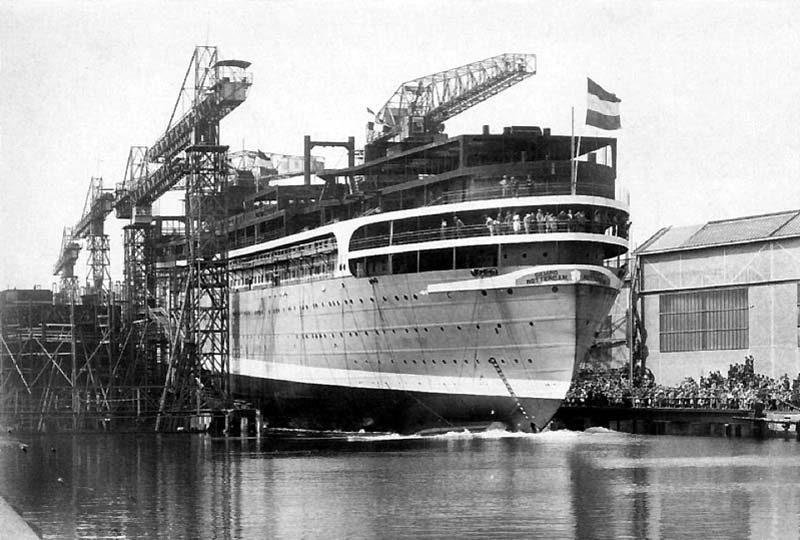
A
fine photograph of the
She was then taken in tow to the De Schelde’s fit-out berth where she would be completed and her magnificent interiors carpeted and fully furnished, making her one of the finest and luxurious liners of her time!
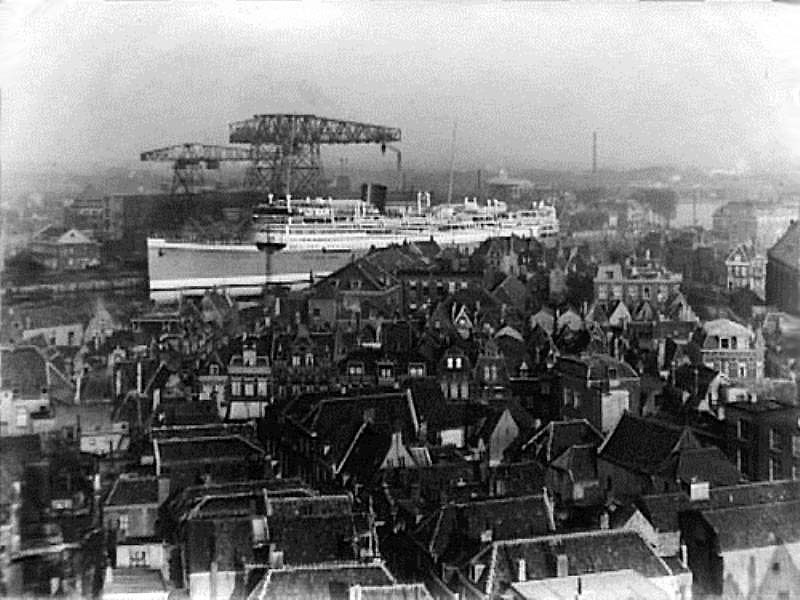
The
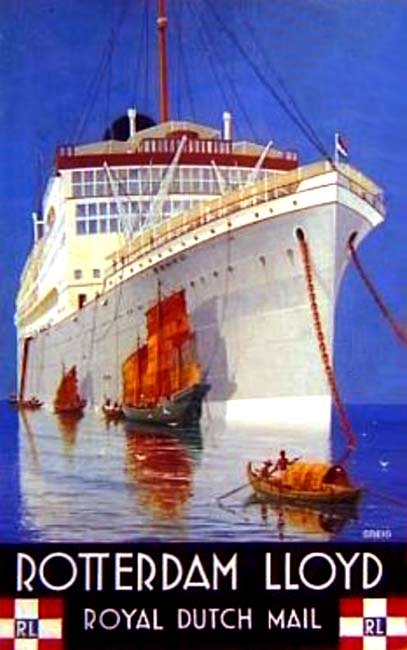
An
early release brochure on the
Completion & Maiden Voyage:
This fine new ship was completed and delivered
to RRL, and she was berthed at the “Lloydkade” (
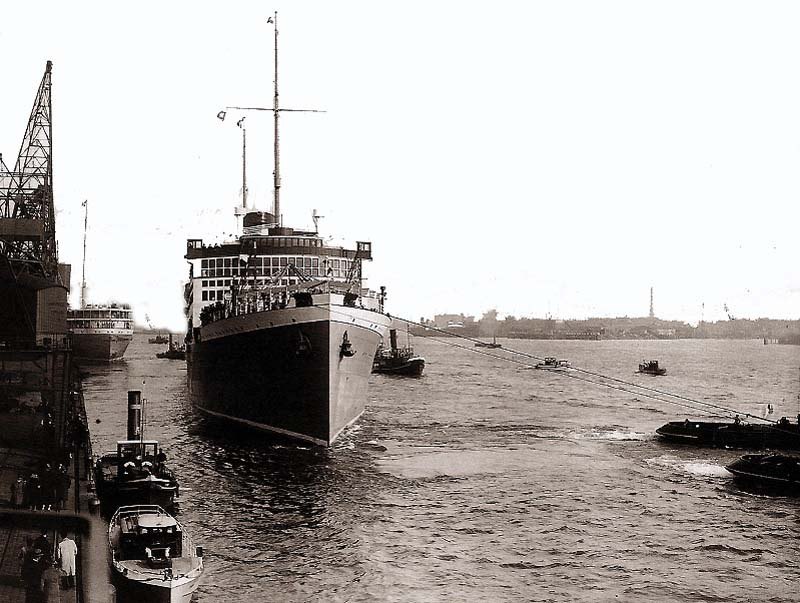
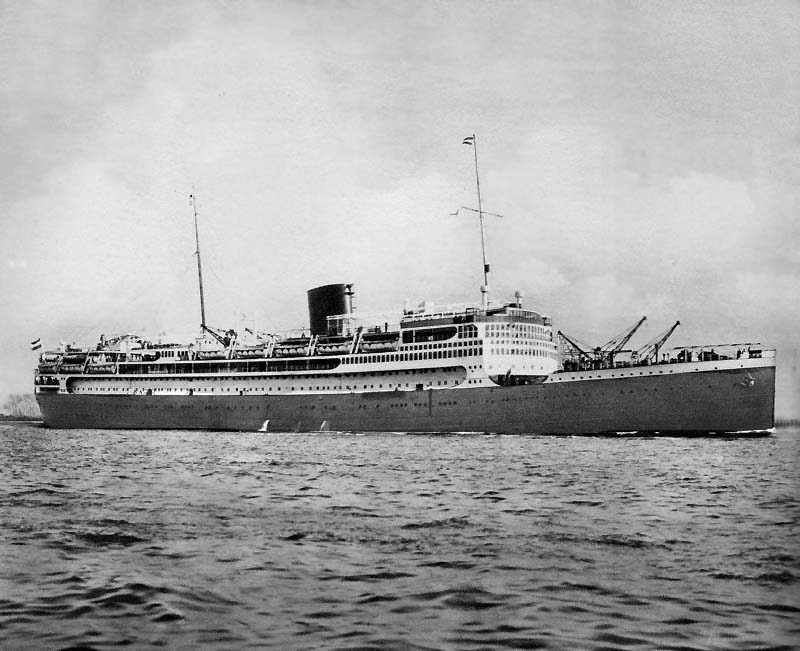
The
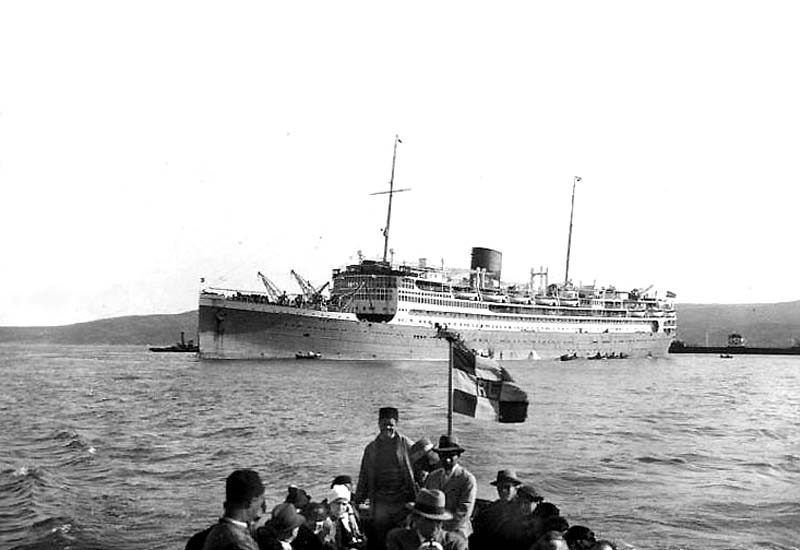
Dempo’s
passengers heading for
Accommodations:
The Dempo offered three main classes, and they were as follows; 236 First Class, 253 Second Class, between First and Second Class depending on demand there were 27 cabins that could be used for either class. Both First and Second Class were extremely luxurious and popular!
Third Class was a more intimate area having
just 70 passengers, yet they also enjoyed a fine Social Lounge and a Smoke Room
with a Bar and a smaller Dining Room with tables for six and eight, seating all
passengers at the one sitting. However, for passengers sailing between ports
along the
There was no doubt that Royal Rotterdam Lloyd
made sure that their ships were the finest and most luxurious liners at sea,
for the décor was sublimely elegant with fine dark timbers, most of it having
been hand carved by locals in the
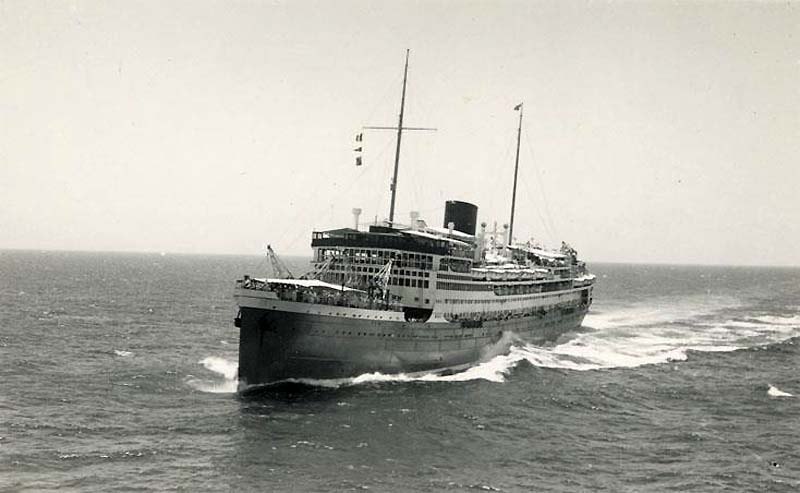
The Dempo’s crew was made up of a Dutch Captain, with Dutch senior Officers, and administration staff, doctors, nurses and Kindergarten attendants, whilst the serving and cabin crew was all Indonesian, only the laundry crew were Chinese. Like on all RRL ships, their crews were famed for their wonderful smiles and being super efficient and providing friendly service.
Below is a photograph of a large part of M.S. Dempo’s crew who up on the First Class covered Sports Deck, with the Captain who is seen in the second row in the centre, with his Staff Captain and First Officer by his side. The Dempo had a crew of 335 who took care of her 627 passengers.
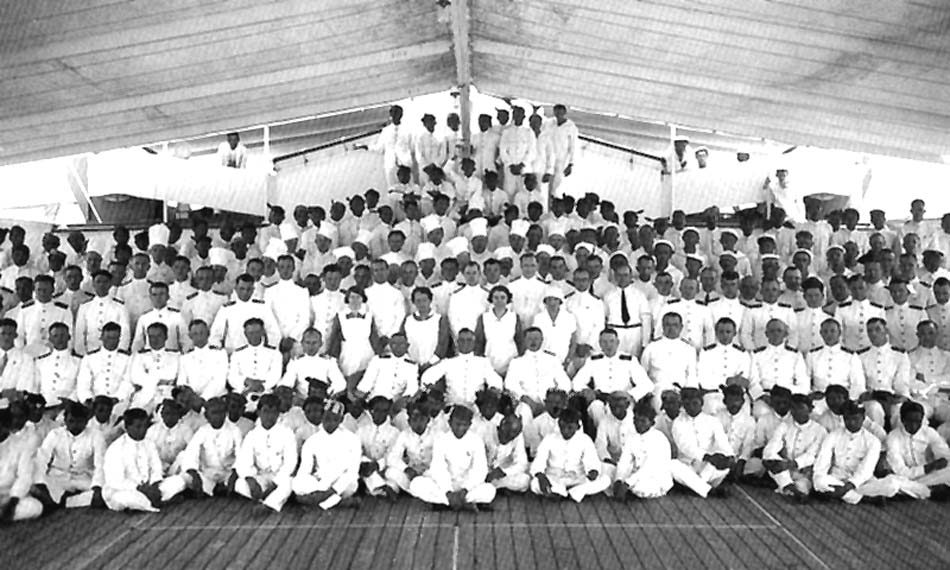
Photo Gallery:
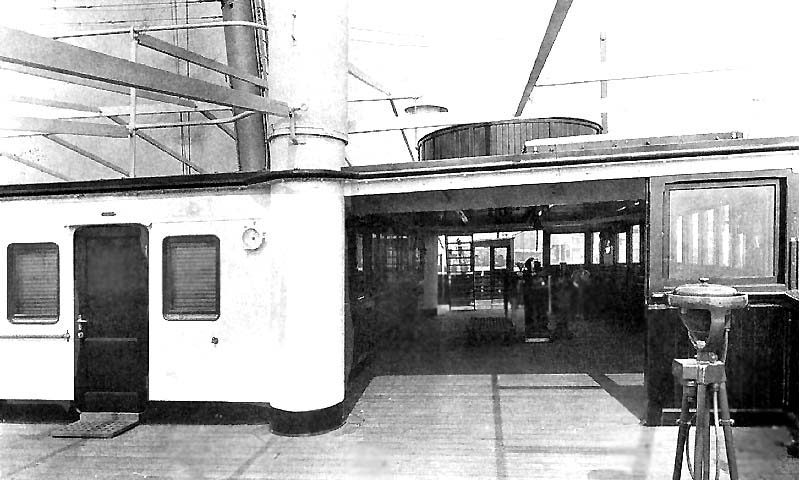
The
Dempo’s spacious bridge is seen from the bridge wing
First
Class
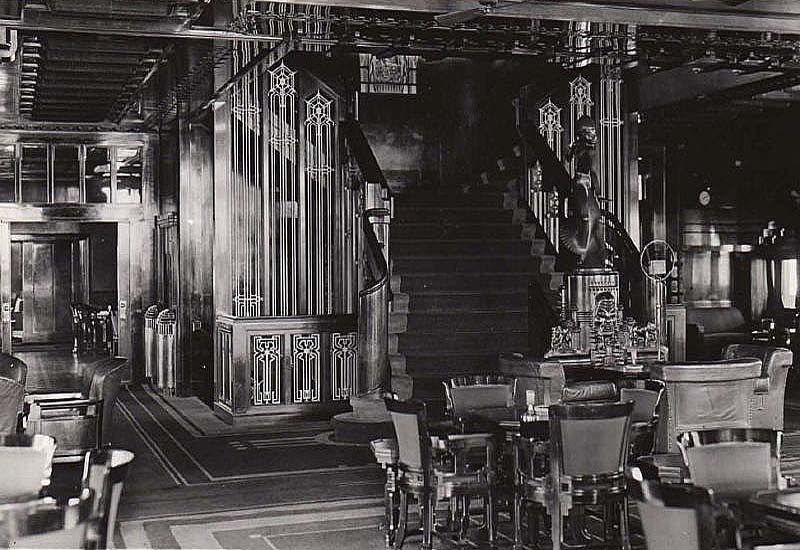
Above
& below: Two views of separate areas of the
magnificent grand Social Room
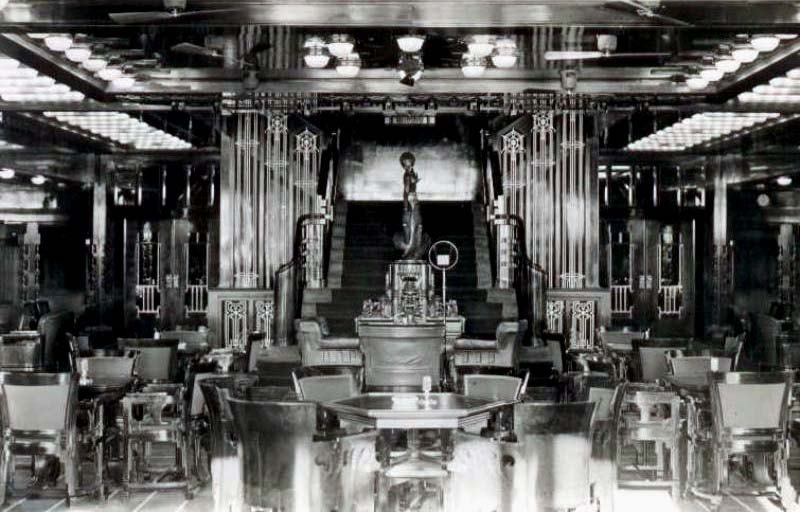
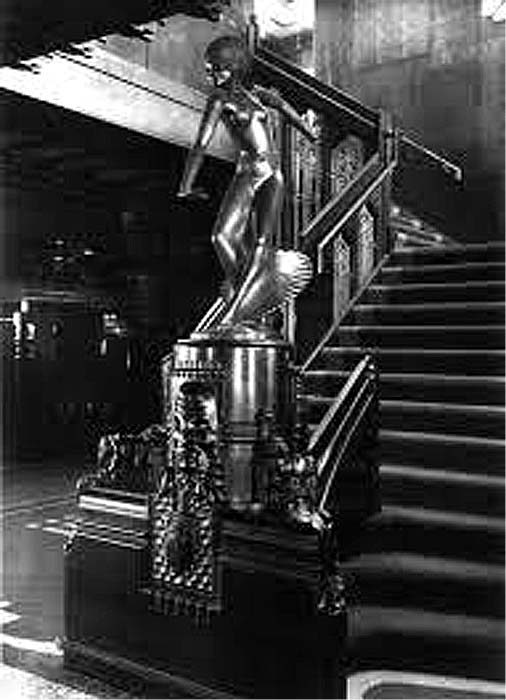
A close up of the spectacular carving at the First Class Main Stairwell at the Social Room
For
interest, the ship was also fitted with a number of lifts (elevators)
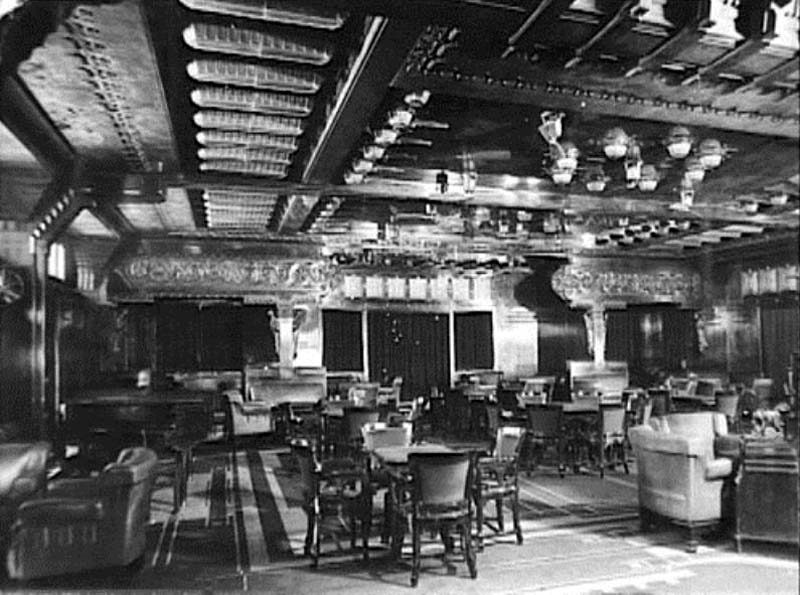
As we can see each venue, like the Main Lounge was beautifully finished with carved timbers by the finest artists

The
Smoke Room and Bar, and this was the time when passengers tended to dress up!
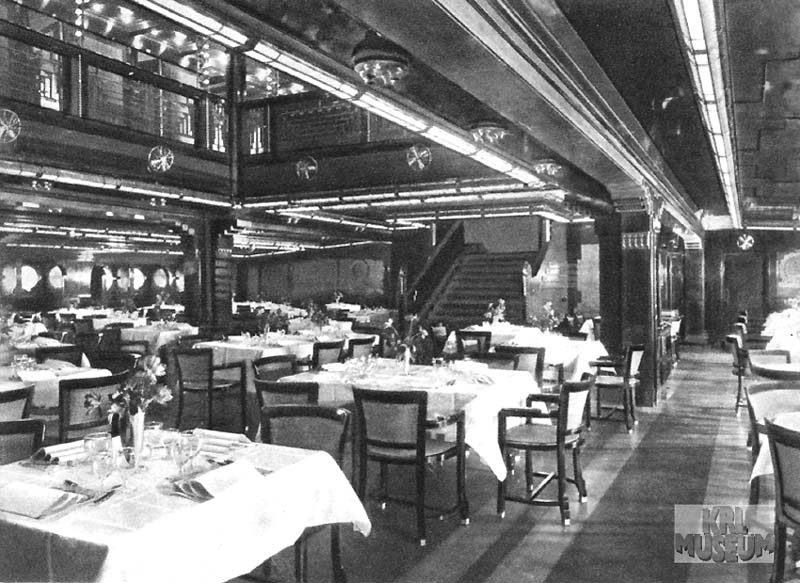
The
magnificent and elegant multi level Dining Room
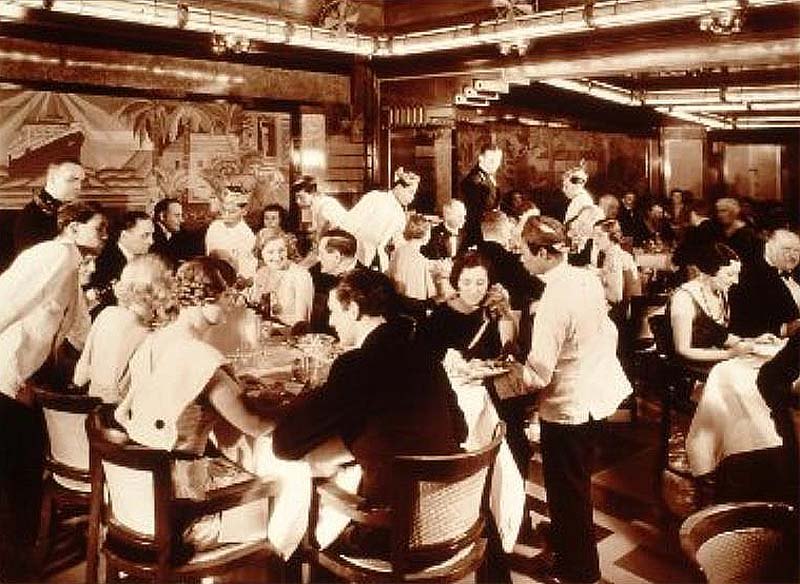
Passengers enjoying a fine meal on board the Dempo in a magnificent setting and with the best of Indonesian service!
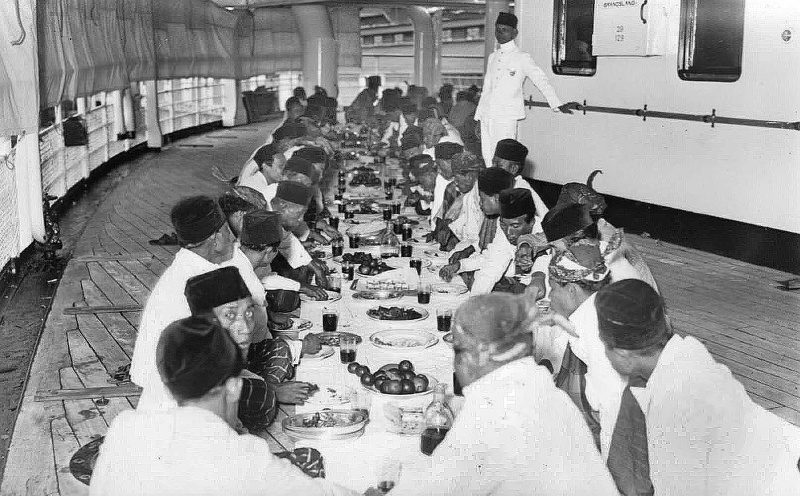
The ships wonderful Indonesian stewards are seen having lunch aft on the poop deck
RRL certainly looked after their excellent Indonesian crews extremely well, as I personally witnessed
for I sailed on the wonderful 1928
completed
and these wonderful men could not do enough
for you, and to make your voyage a happy one!
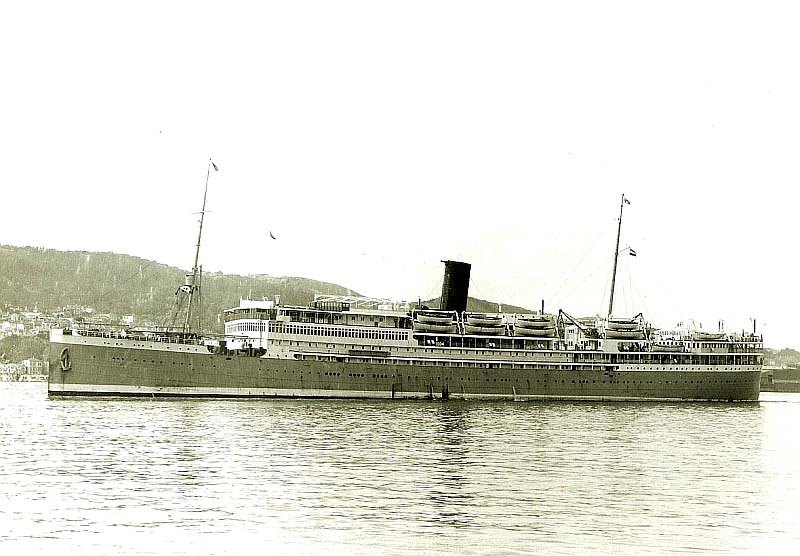
Here
we see the beloved
Photograph by & © Reuben Goossens
The
M.S. Sibajak Link is at the bottom of this page
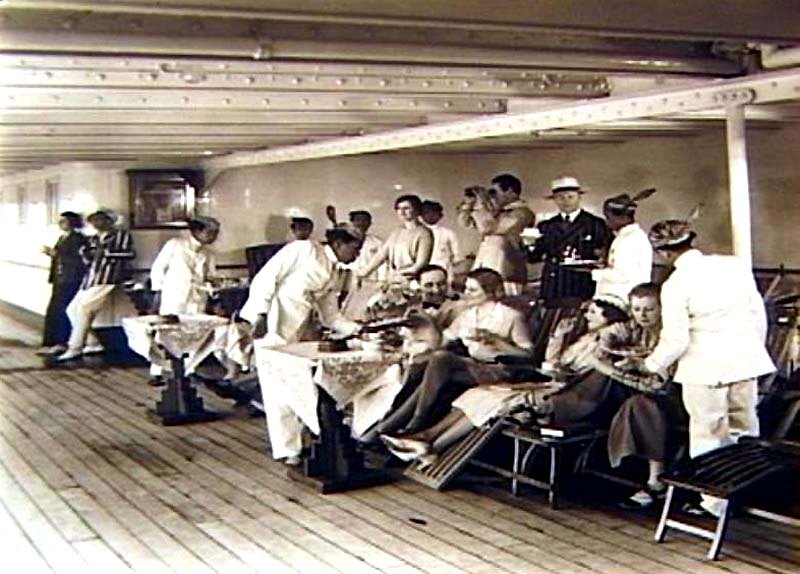
Passengers
enjoying their time out on Promenade Deck and being served snacks and drinks
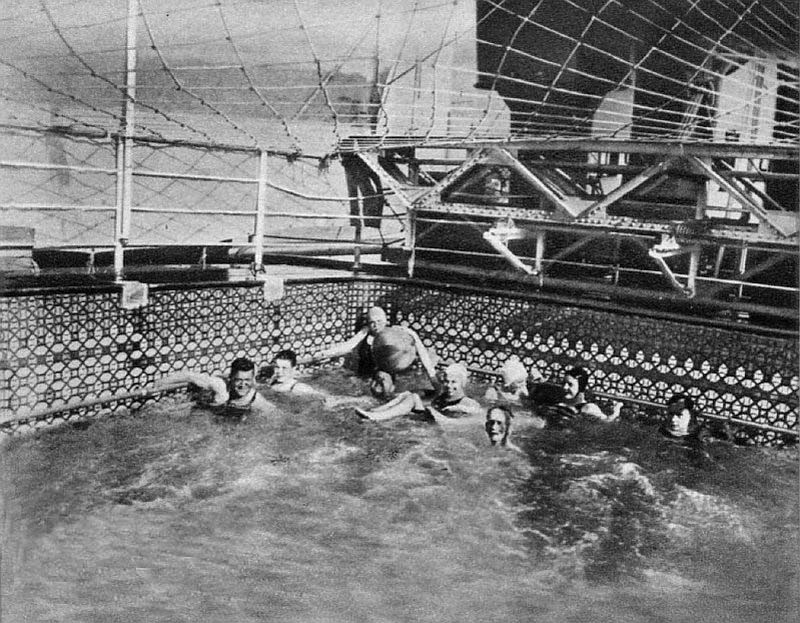
The
Swimming Pool
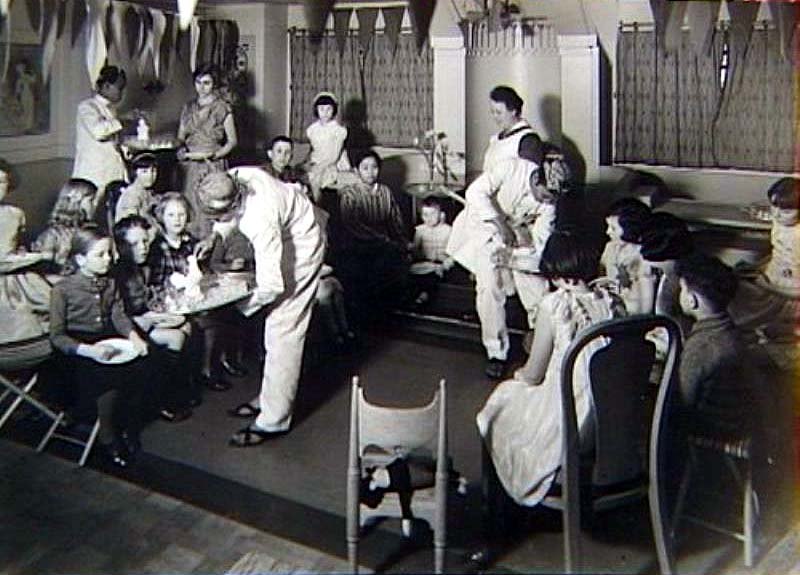
The
Children’s Play Room with both female kinder-garden nurses and male
stewards at hand to guide the children in their games
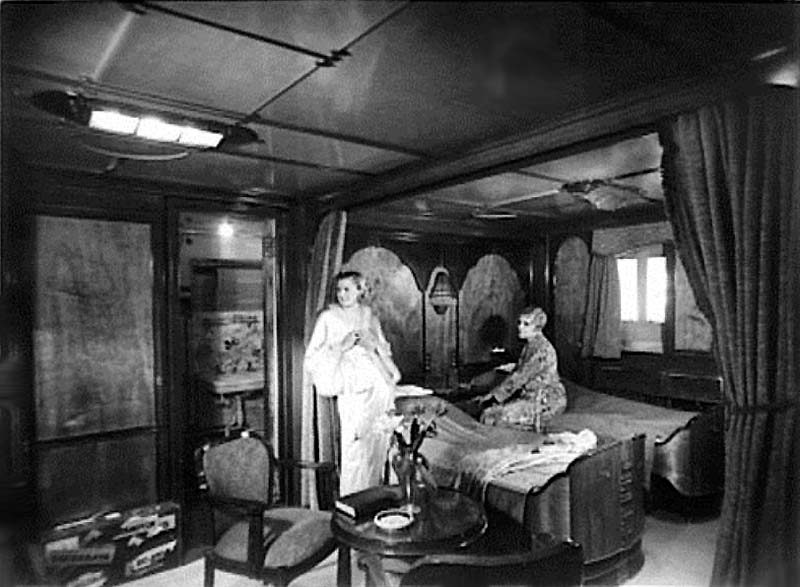
This
is a deluxe cabin, with an entrance hall, a lounge, bedroom and a spacious
bathroom with a bath and a shower, etc.
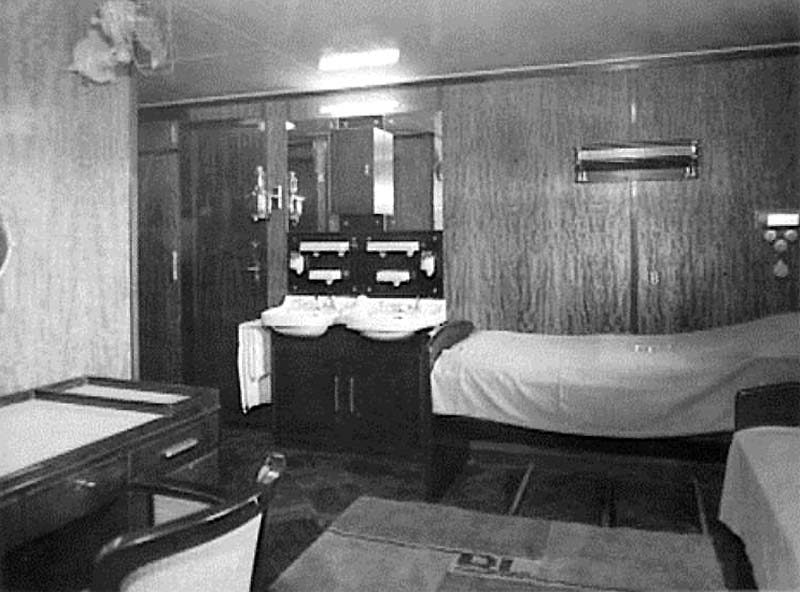
This
is a cabin that had a private bathroom, and these rooms came in various layouts!
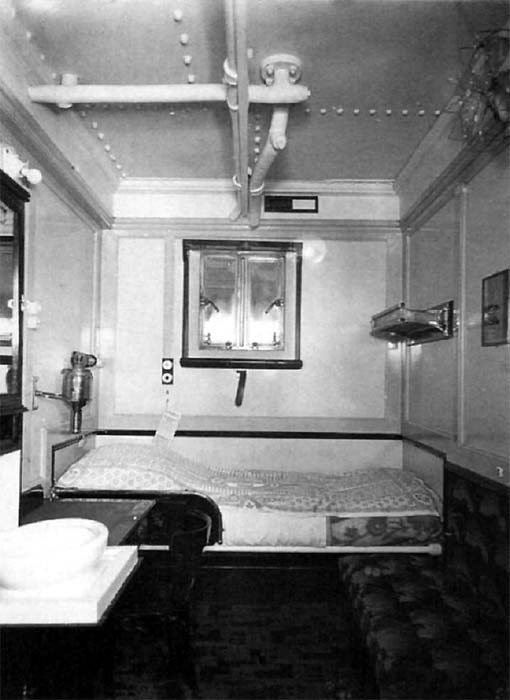
A
typical single bed cabin with share facilities
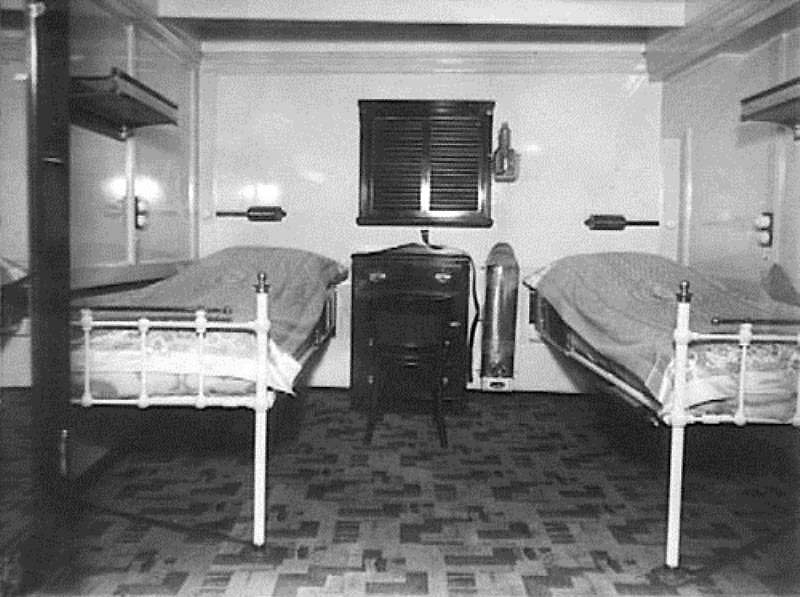
This is a twin bedded cabin with shared facilities as was most of the ship, which was normal in those days
These
cabins looked somewhat simpler, but were very comfortable in every respect
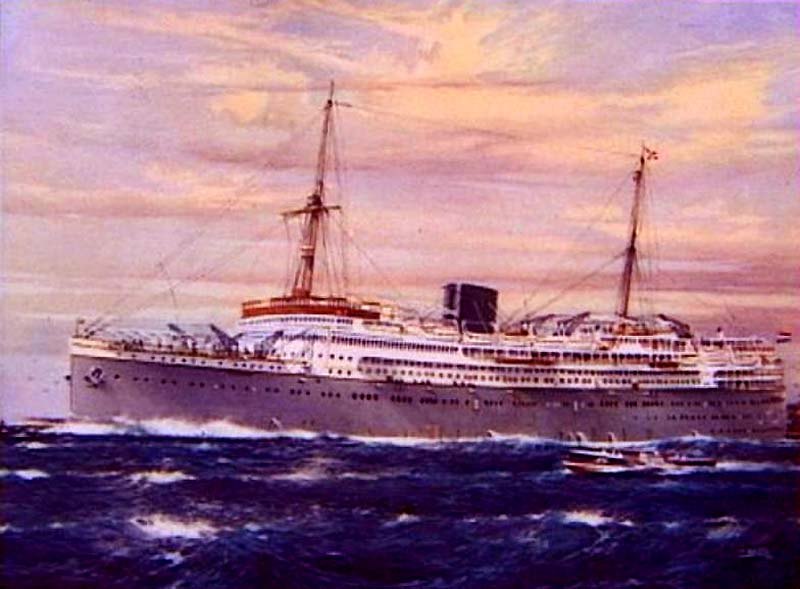
An
RRL full colour postcard of the
Second
Class
As we now look at the Second Class facilities, I am sure that you will be amazed how unbelievably luxurious her public rooms were, if fact they were by far more spectacular than First Class on most Trans-Atlantic liners. Sadly I do not have any images of her Third Class, but be assured Rotterdam Lloyd, never did anything by half and these venues would also have been wonderful!
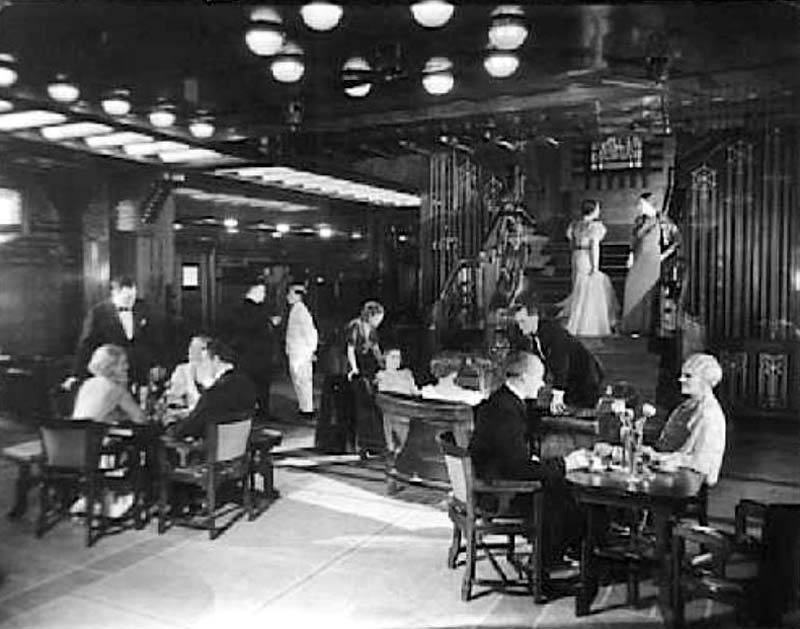
Above & below: Two fine views of the second Class Social Hall proving that even this
class was super luxurious and was
much better than most first classes on other liners
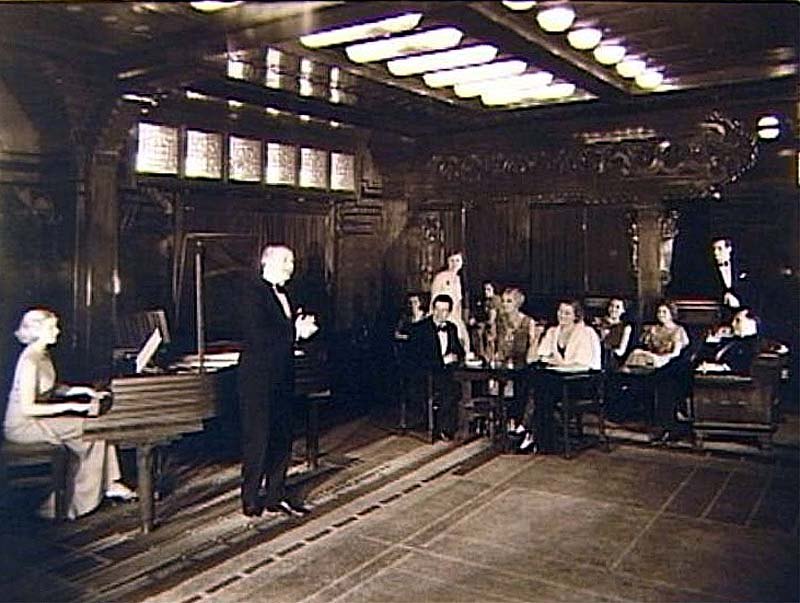
The
Social Hall
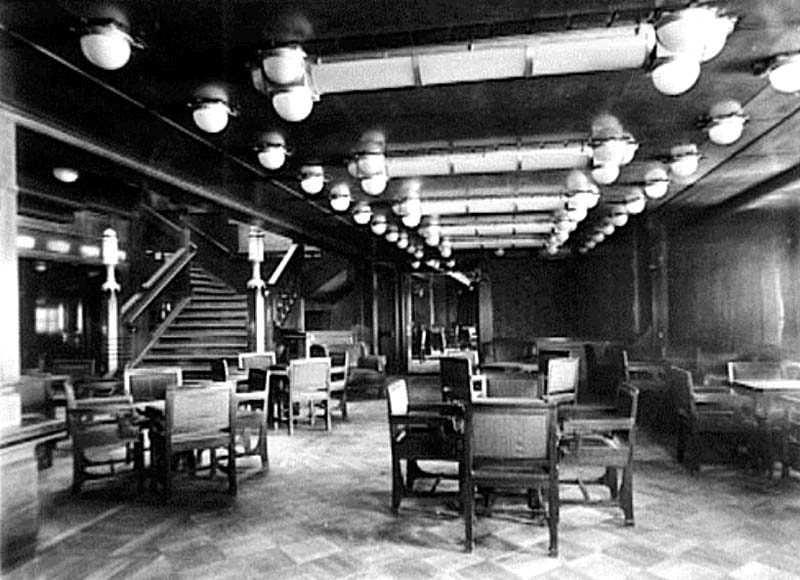
The
Smoke Room
Above
& below: Again two fine views of a magnificent
venue, the Smoke Room and its Bar
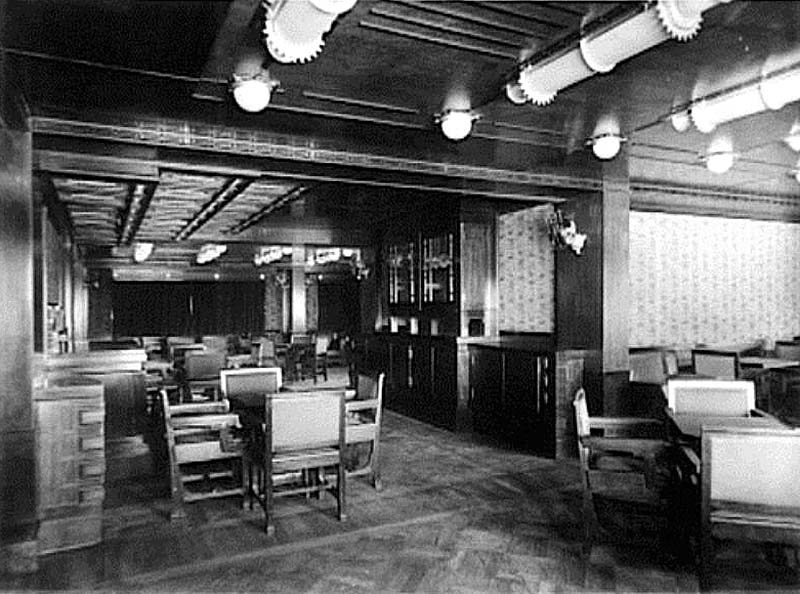
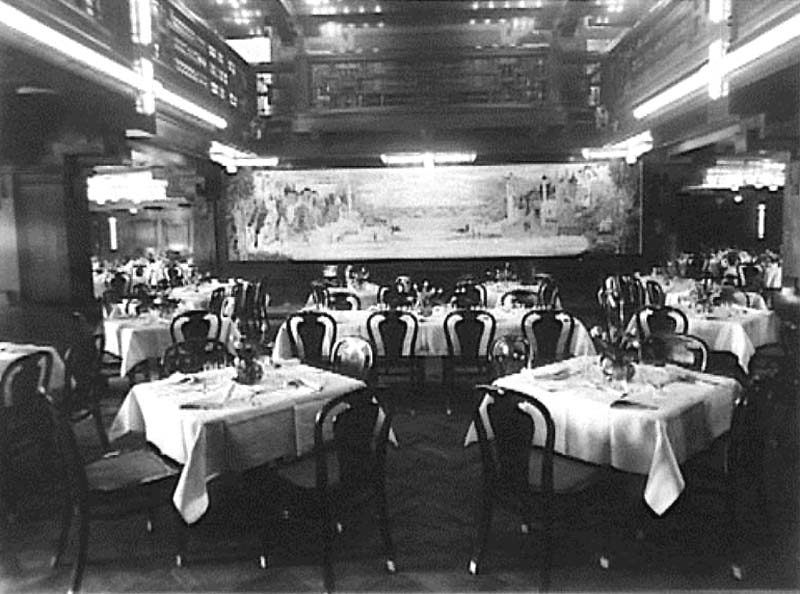
Like First Class, the Second Class Dining Room was a most luxurious venue and it was two decks high
Like
the other dining room it also featured huge wall murals by famous Dutch artists
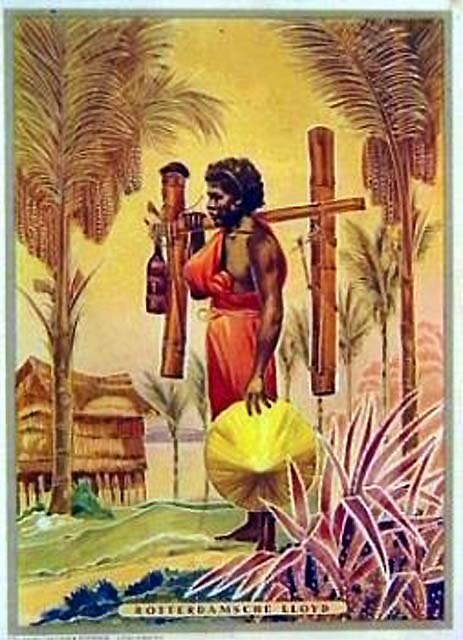
A
Second Class Menu Card cover
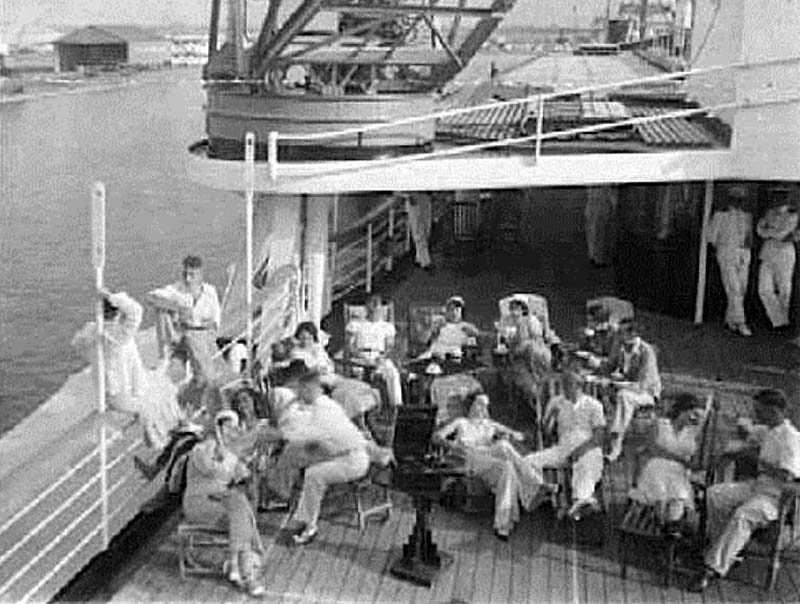
Passengers
are seen out on deck
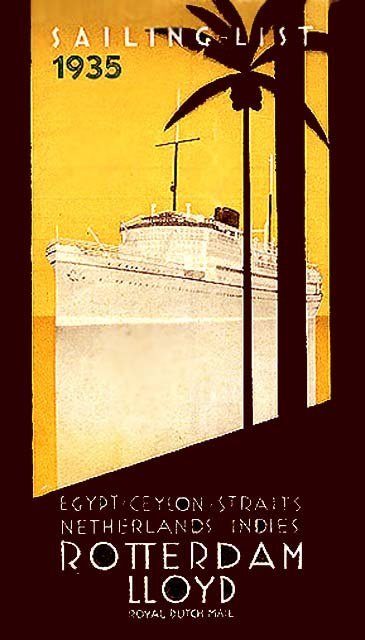
A
1935 sailing schedule
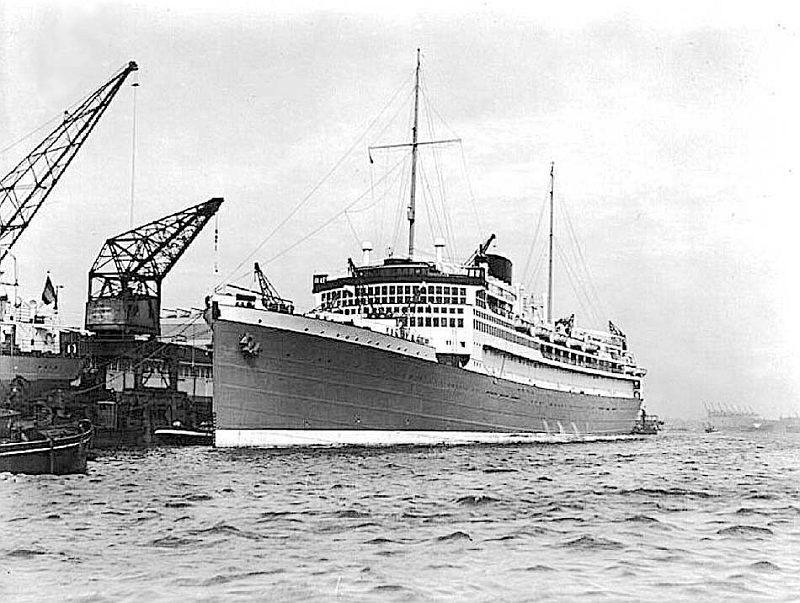
Here
we see the Dempo berthed at the Shipyard’s refit berth at
In 1937 the Dempo was given a refit at the De Schelde Yards, which saw her tonnage change slightly higher to 17,024 GRT. There were some minor interior changes, with improvements to both Third and Fourth Class facilities.
M.S. Demo and her sister
But due to war problems in Europe, with the Netherland’s officially being a neutral country, it was decided in 1939 that the Dempo would given signage that she was an official Dutch Neutral passenger liner status, thus “DEMPO - HOLLAND” was painted on her hull amidships on both sides, as well as the Red White and Blue Flag forward and aft.
In September 1939 she was laid up at
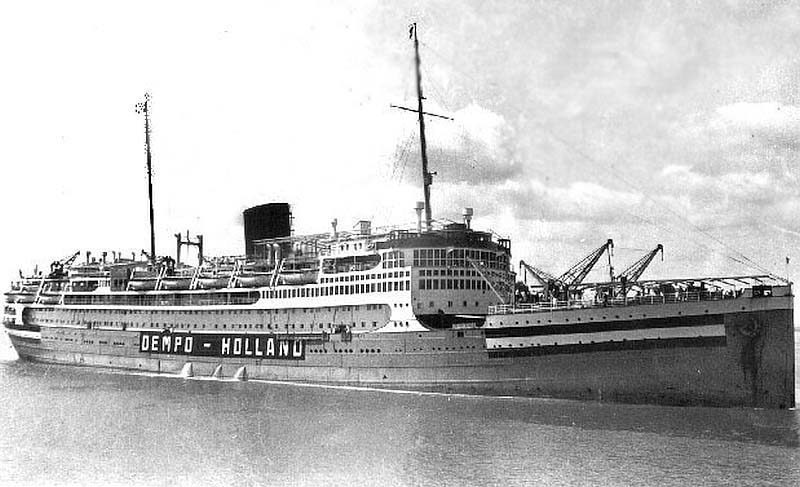
Dempo with her pre war livery
But then came the time that M.S. Dempo would make her final passenger liner service as she headed for the United Kingdom arriving late in December 1940, and was then temporarily laid up.
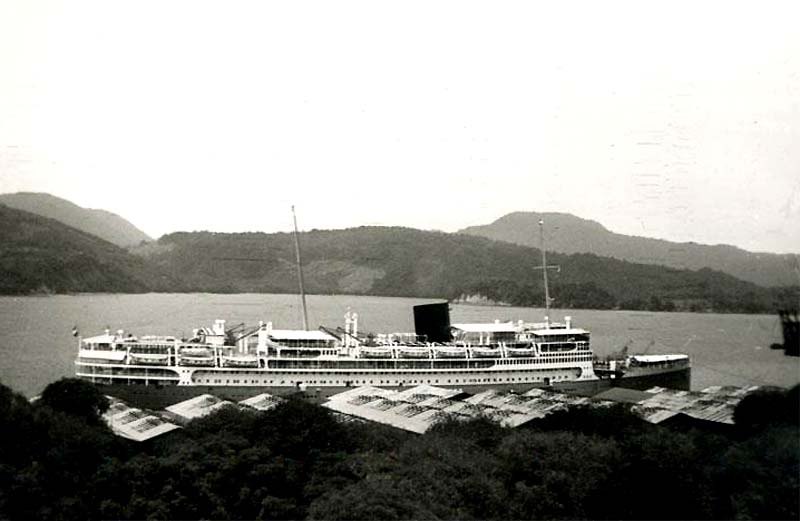
The
World War Two:
The MS Dempo was officially chartered by the
“British Ministry of War Transport” (BMWT) in January 1941 and from
March 7 she was given a refit in
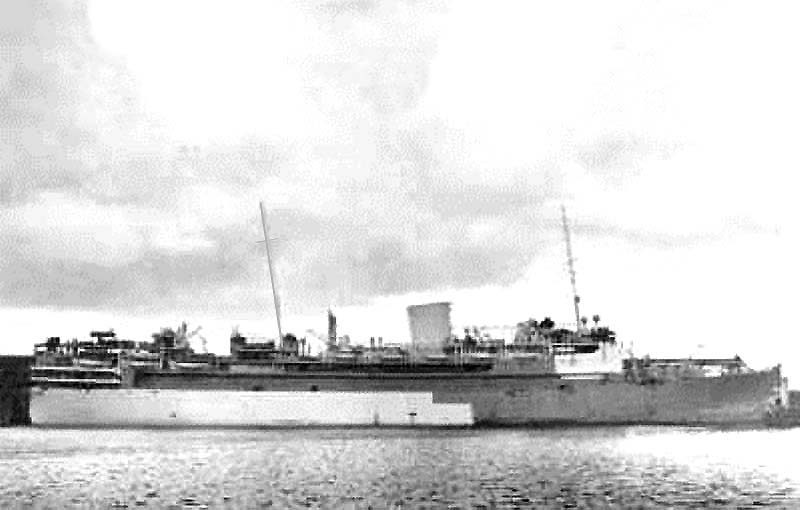
The
Dempo is seen at
Note that the windows on Promenade Deck forward have been closed in, later they would be opened again
She was completed on March 21, 1941, and she
was now officially prefixed HMS Dempo, but retained her Dutch crew, as well as
a British small administration crew and several officers. Her role would be
mostly to operate on convoy voyages on to Africa,
Although I do not have a complete list of her operations and all convoy voyages during the WW2, but I am able to provide the following list.
HMS Dempo Convoy WS-7:
On March 24, 1941 the Dempo joined Convoy WS-7
which was forming in the
On this Convoy, Dempo headed south into the
Atlantic and reached
Convoy WS-18:
Then on April 15, 1942 the Dempo joined Convoy
WS-18, and she departed the Clyde, the captain noted that two of other ships in
the Convoy included the two New Zealand Passenger liners, the luxurious Trans
Pacific Liner MS Aorangi and the
On April 29, the Convoy had reached
Convoy WS-26:
The next Convoy WS-26 together with KMF-8
departed the
Convoy KMF-20:
The Dempo and Rangitata were part of Convoy
KMF-20 which sailed together with Convoy WS32, which departed from Oversay on
July 20, 1943. HMS Dempo was part of the Mediterranean bound KMF-20 and they
split from the WS32 during the evening of July 25. The Dempo then headed for
the
Convoy MKF-22:
This time the Dempo joined Convoy MKF-22,
which also contained the Netherland Line Liner MS Christiaan
Huygens, and this Convoy departed
Convoy MKF-22:
On December 16, 1943 the Dempo joined Convoy
MKF-22 which departed
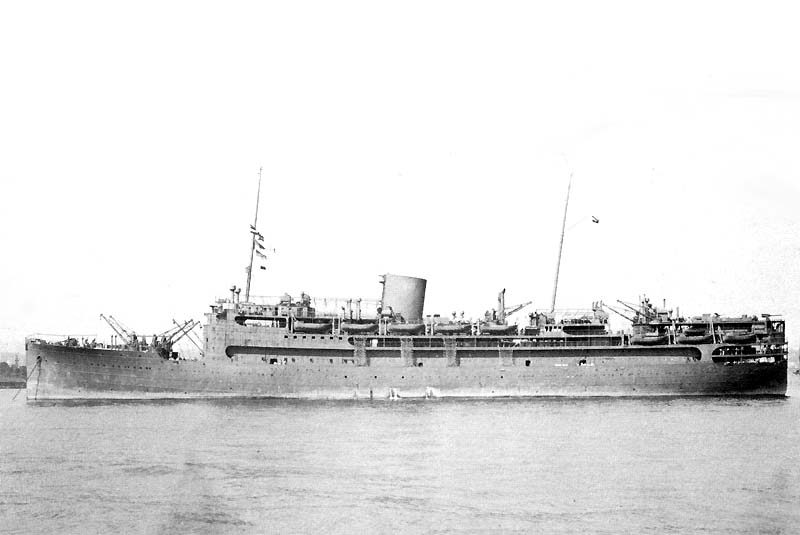
HMS Dempo the Troopship seen towards her latter days
Convoy SNF-17 - Dempo’s Final Voyage Ever:
Dempo sailed as part of Convoy SNF-17 from
On March 15th 1944 the Dempo departed in
convoy SNF-17 in her role as a Troopship for the “British Ministry of War
Transport” (BMWT), and she departed
However, the German Submarine “U-371” under the command of Kapitän Waldemar Mehl was also operating around the Algerian coast, and on March 17, 1944 the U-371 attacked Convoy SNF-17 and at 09.38 hours the U-371 fired a Gnat acoustic torpedo at convoy SNF-17 around 30 miles north-northeast of Bougie (today known as Béjaïa in Algeria) and observed a hit on a ship the S.S. Maiden Creek, which settled by the stern after she was hit.
Then at 09.42 hours a spread of three further
torpedoes were fired and two hits were heard. After another Gnat at 09.48
hours, a further detonation on another ship was heard. The second torpedo hit
HMS Dempo on the starboard side. With the Dempo being badly damaged
Captain
This fine Dutch liner, and Troop Transport Ship, HMS Dempo during World War Two gallantly transported a total of 41,895 men.
S.S. Maiden Creek:
The other ship hit was the 6,165 GRT American cargo ship the SS Maiden Creek owned by “Waterman
Steamship Co” of
She was badly damaged and she was taking on water, and the ship was abandoned, but then it was decided to re-board her and prepare her to be towed to be beached. The next day, March 18, the Maiden Creek was towed into Bougie where she was beached to prepare her to be salvaged. But that became impossible as she was swept off the beach by a severe storm and broke in two in the heavy weather and she was duly written off as a total loss.
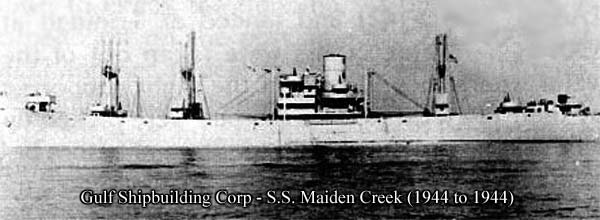
The
C-2 Class American built S.S. Maiden Creek was built in 1944 and was destroyed
in that same year.
M.S. Dempo
Identification
Data:
The Dempo was the
sister ship of the MS Baloeran 1930.
Manager:
Owner: Willem Ruys &
Sons,
Registration &
Flag:
Call sign: NMBD
Additional
info:
Call sign: PDOO (1934).
Propulsion: Motor Vessel
Type: Passenger Liner
Material
Construction
Data:
Shipbuilder: NV De Schelde Shipyard &
Engine Factory, Flushing (
Yard: 189.
Laid Down: July
15, 1929.
Launched: July
26, 1930.
Delivered: February
21, 1931.
Registered at:
Technical
Data:
Engine Manufacturer: NV
Propulsion: Two single acting 10 cylinder De Schelde Sulzer 10ST76 2 cycle engines producing
7,000 HP each at 100 RPM.
Auxiliary Engines: 4 x 6SS38 totalling 3,120 HP at 170
RPM.
Number of screws: 2.
Speed: 18 Knots service
speed, 18.8 maximum.
Tonnages: 16,979 GRT, 10,064 NET,
23,000 DWT.
. 17,024 GRT after
refit in 1937.
Cargo: Grain; 392,000 Cubic
Ft- Bales; 334,000 Cubic Ft.
Ballast: Troopship - pig iron and sand.
Breadth: 70.2 ft - 21.45 m.
Draught: 44 ft - 13.41 m.
Propulsion: Two single acting 10 cylinder Sulzer 10ST76 2 cycle engines producing 7,000 HP
each at 100 RPM.
Auxiliary Engines: 4 x 6SS38 totalling 3,120 HP at 170
RPM.
Machinery built by:
Accommodations:
Passengers: 236 First
Class, 253 Second Class. There were 27 convertible to either First or
Second Class, depending on demand. There were also an intimate 70 in Third
Class, & 68 in Fourth (Deck) Class.
Crew: 335 (Dutch,
Indonesian & Chinese).
Remembering
the magnificent Royal
1931
to 1944
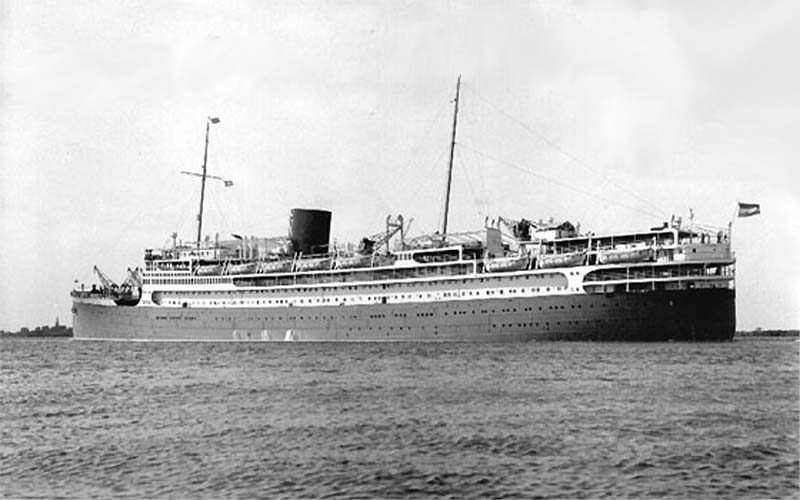
A
fine view of
Also visit my 11 Page M.S. Sibajak Feature
***********************************
“Blue Water Liners
sailing to the distant shores.
I watched them come, I watched them go and I watched them die.”
Return to the ssMaritime MAIN INDEX
ssMaritime.com & ssMaritime.net
Where you will discover over 1,355 Classic Liners & the 1914 built MV
Please
Note:
ssmaritime and associated sites are 100% non-commercial and the author seeks no funding or favours of any shape or form, never have
and never will!
Photographs
on ssmaritime and associate pages are: by
the author or from the author’s private collection. In addition there are
some images that have been provided by Shipping Companies and private
photographers or collectors. Credit is given to all contributors. However,
there are some photographs provided to me without details regarding the
photographer/owner concerned. I hereby invite if owners of these images would
be so kind to make them-selves known to me (my email address may be found on www.ssmaritime.com only), in order that due credit may be
given.
This
notice covers all pages: although, and I have done my best to
ensure that all photographs are duly credited and that this notice is displaced
on each page, that is, when a page is updated!
ssMaritime is owned
& © Copyright by
